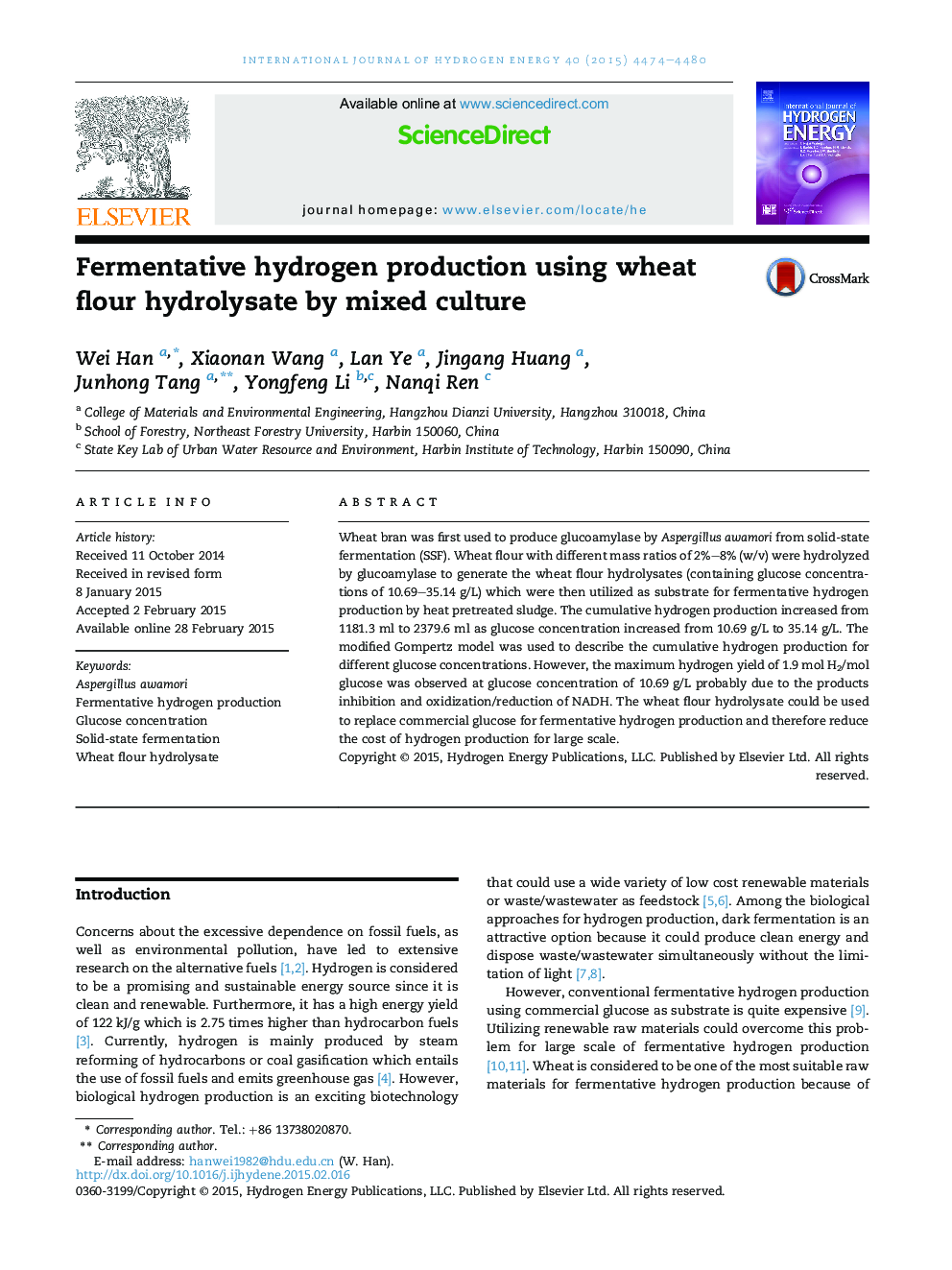| Article ID | Journal | Published Year | Pages | File Type |
|---|---|---|---|---|
| 7715810 | International Journal of Hydrogen Energy | 2015 | 7 Pages |
Abstract
Wheat bran was first used to produce glucoamylase by Aspergillus awamori from solid-state fermentation (SSF). Wheat flour with different mass ratios of 2%-8% (w/v) were hydrolyzed by glucoamylase to generate the wheat flour hydrolysates (containing glucose concentrations of 10.69-35.14Â g/L) which were then utilized as substrate for fermentative hydrogen production by heat pretreated sludge. The cumulative hydrogen production increased from 1181.3Â ml to 2379.6Â ml as glucose concentration increased from 10.69Â g/L to 35.14Â g/L. The modified Gompertz model was used to describe the cumulative hydrogen production for different glucose concentrations. However, the maximum hydrogen yield of 1.9Â mol H2/mol glucose was observed at glucose concentration of 10.69Â g/L probably due to the products inhibition and oxidization/reduction of NADH. The wheat flour hydrolysate could be used to replace commercial glucose for fermentative hydrogen production and therefore reduce the cost of hydrogen production for large scale.
Keywords
Related Topics
Physical Sciences and Engineering
Chemistry
Electrochemistry
Authors
Wei Han, Xiaonan Wang, Lan Ye, Jingang Huang, Junhong Tang, Yongfeng Li, Nanqi Ren,
